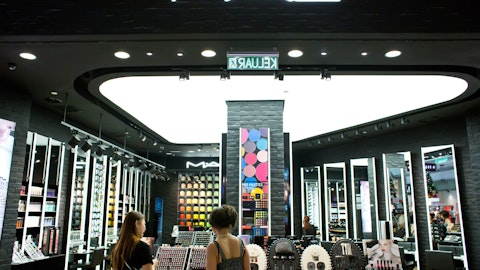As a member of the management team, I can assure you, there is a strong commitment from the Board and the management team, to deliver the best provider and customer experience, and to create value for our shareholders. With the remaining time, I will address the Syndeo program, our third quarter results, our financial guidance and the status of our strategic transformation program. Starting with the Syndeo program; as we highlighted in the press release earlier this afternoon, we incurred a $63.1 million restructuring charge this quarter due to Syndeo provider experience issues. As a result of these challenges, there was a slowdown in U.S. system placements that led to lower-than-expected overall net sales growth. To provide some background, Syndeo 1.0 launched in the U.S. in March of 2022.
The launch was met with excitement and swift provider adoption. However, after some time in the field, some providers experienced frequent treatment interruptions and issues such as distractive noises and difficult bottle insertion. Most importantly, there was an issue with low flow and clogs in the system. Simply put, Syndeo 1.0 did not meet the high standards of user experience that Hydrafacial has been known for over its 26-year history. Throughout 2022, in the first half of 2023, the company made several enhancements to Syndeo to address and remediate these issues, releasing Syndeo 2.0 into the field. Despite these efforts, many of the issues continue to persist. After rigorous testing and development, including simulating over 10 years of heavy end use – in office use, we believe we have addressed the Syndeo issues with our current Syndeo 3.0 standard implemented in July of this year.
We are very pleased with the real-world performance over the four months Syndeo 3.0 has been in the field. Additionally, Syndeo 3.0 devices coming off the production line and existing Syndeos in the field that have been enhanced to the 3.0 standard have a return rate in line with Hydrafacial’s low historical benchmark. To stand behind our commitment to our customers and protect the company’s brand reputation, we decided that with respect to Syndeo devices, we will only market and sell Syndeo 3.0. With this decision, we designated the approximately 4,300 Syndeo 1.0 and 2.0 devices in inventory as obsolete, resulting in an impairment charge of $18.8 million. Additionally, during the quarter, we incurred $12.3 million in costs associated with enhancing or replacing approximately 2,850 Syndeo 1.0 and 2.0 devices in the field.
Lastly, we accrued incremental costs of approximately $32.1 million to enhance or replace the roughly 4,500 Syndeo 1.0 and 2.0 devices yet to be addressed in the field. This decision was made after concluding it was too costly to diagnose, repair and resell return Syndeo 1.0 or 2.0 devices in inventory. In addition, by replacing the systems or enhancing currently – functioning systems in the field, we are ensuring provider satisfaction and safeguarding our brand equity. We will also extend all Syndeo warranties by one year to further support our providers. We do not believe the extended warranty will have a material impact on our financial statements. Despite these challenges, we want to reiterate that the business model remains fundamentally sound.
And the impact has been contained to a portion of our providers without spreading to the end consumer. In addition, the strength and reputation of the Hydrafacial brand and our long-term opportunity remain intact. We based this assessment on two key data points. First, our recently conducted provided survey showing our Net Promoter Score, or NPS, remains best-in-class in the aesthetic device category. As a reminder, NPS is a measure of how likely it is for a user of a brand to recommend it. Second, our passionate community of Hydrafacialists around the world or what we refer to as the Hydrafacial nation, powers our 30,000 active delivery systems globally. Our footprint within the medical aesthetics industry is unparalleled. Next, we’ll move on to Q3 results.
Net sales for the third quarter grew by 10% to $97.4 million. This came in well below the company’s expectations with underperformance in U.S. delivery systems, partially offsetting strong performances in APAC and EMEA. From a geographic perspective, Americas declined 11% year-over-year due to the Syndeo challenges we just discussed. APAC revenue grew 63% year-over-year to $24.7 million. China accounted for $16.9 million and plus 79% year-over-year growth, driven by strong delivery system placements, reflecting our success in penetrating the market and the significant potential to grow our nascent presence there. EMEA grew 37% year-over-year to $21.1 million, with the strength coming from system placements and consumables net sales, specifically in the U.K. and Germany.



